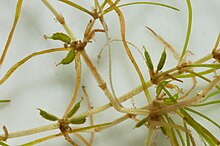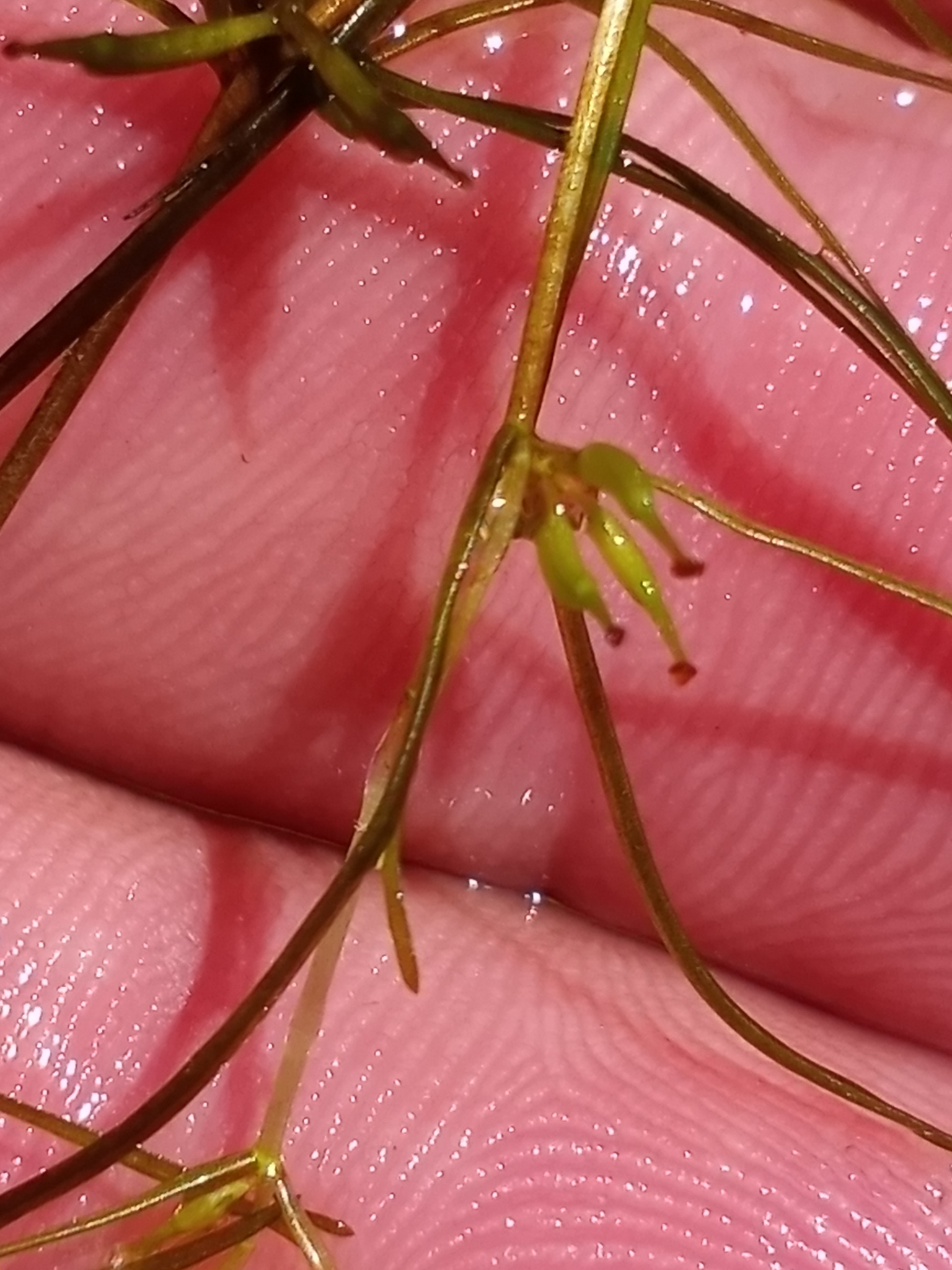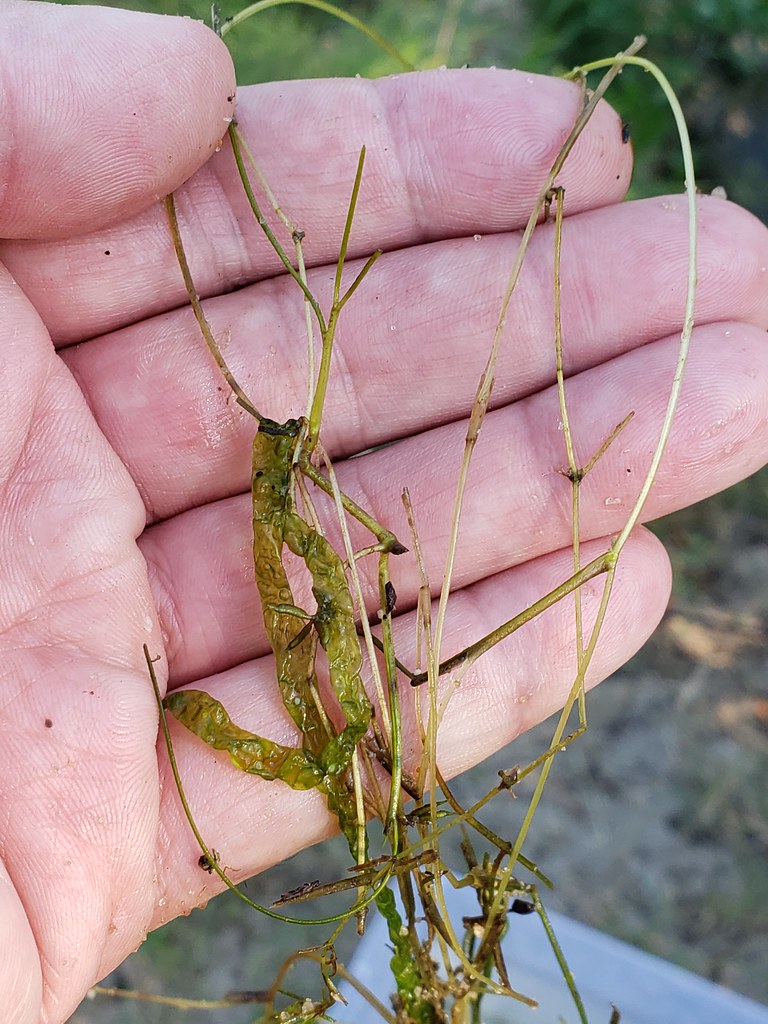Map Snapshot







15 Records
Seasonality Snapshot
Use of media featured on Maryland Biodiversity Project is only permitted with express permission of the photographer.
Horned Pondweed in Anne Arundel Co., Maryland (5/30/2022). (c) Wayne Longbottom, some rights reserved (CC BY-NC).
View Record Details
Media by
Wayne Longbottom.
Horned Pondweed in Anne Arundel Co., Maryland (6/29/2019). Determined by Rob Aguilar and Dr. John Hall.
View Record Details
Media by
Bill Hubick.
Source: Wikipedia
| Zannichellia palustris | |
|---|---|

| |
| Scientific classification | |
| Kingdom: | Plantae |
| Clade: | Tracheophytes |
| Clade: | Angiosperms |
| Clade: | Monocots |
| Order: | Alismatales |
| Family: | Potamogetonaceae |
| Genus: | Zannichellia |
| Species: | Z. palustris
|
| Binomial name | |
| Zannichellia palustris | |
Zannichellia palustris, the horned pondweed,[1] is a plant found in fresh to brackish waters in the United States (especially in the Chesapeake Bay),[2] Europe, Asia, Australasia, and South America. It is recognizable by its long, thread-like leaves and "stringy" appearance. Its roots are long and tendril-like, and its seeds bear a distinctive horned shape, hence the common name. The species epithet palustris is Latin for "of the marsh" and indicates its common habitat.[3] A diploid, its chromosome number was confirmed as 2n = 24.[4]
References
[edit]- ^ Hadlington, Simon (2003-02-24). "Science & nature: Invasion of the Lakes ; Eighty years ago, a naturalist surveyed the Lake District's aquatic plant life. Ecologists recently repeated his work. The changes they found, says SIMON HADLINGTON, provide a stark warning". The Independent. p. 12.
- ^ "Horned Pondweed". Maryland Department of Natural Resources. Archived from the original on 2009-01-16. Retrieved 2009-04-18.
- ^ Archibald William Smith A Gardener's Handbook of Plant Names: Their Meanings and Origins, p. 258, at Google Books
- ^ Norio Tanaka, Yu Ito, Ruriko Matsuyama and Koichi Uehara (2007) Chromosome numbers of Zannichellia L. (Zannichelliaceae) in Japan. Bulletin of the National Museum of Nature and Science. Series B 33: 133-136

